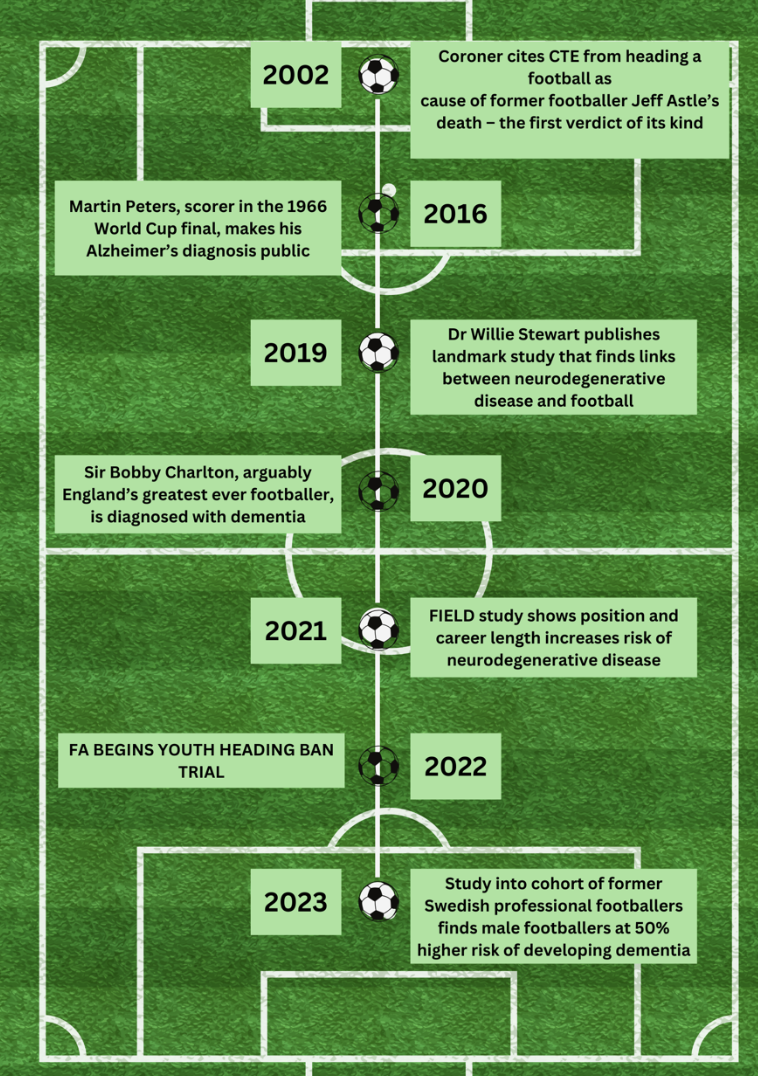Banning heading in youth football – what is the evidence?

```html
Protecting Young Minds: An Exploration of the Heading Ban in Youth Football
The Genesis of the Ban
In a move that sparked debate among football enthusiasts, the English FA initiated a trial ban on heading in matches for players under 12 during the 2022-23 season. This ban, extended to the 2023-24 season, aims to gather evidence supporting a permanent ban proposal to the IFAB. This decision builds upon a prior ban on heading in training for the same age group, reflecting a growing concern about the potential long-term health consequences of heading.
The Unsettling Link Between Football and Neurodegenerative Disease
A shadow has fallen over the beautiful game – the growing suspicion of a link between football, particularly heading, and neurodegenerative diseases. This includes both immediate concerns like concussions, and the devastating long-term effects of dementia and Chronic Traumatic Encephalopathy (CTE).
High-profile cases, such as 1966 World Cup heroes Bobby and Jack Charlton, and Manchester United legend Denis Law, being diagnosed with dementia, have intensified the scrutiny on this issue.
Mounting Evidence: The Case Against Heading
Research has painted a stark picture, revealing a heightened risk of neurodegenerative disease in footballers, particularly outfield players compared to goalkeepers. Studies have shown a correlation between the length of a player's career and their risk, further implicating repetitive head impacts from heading.
A pivotal study by McKee et al. (2016) highlighted the connection between repetitive head impacts and CTE, suggesting that the cumulative effect of heading, rather than isolated concussions, may be the primary driver of this devastating condition.
Concussion: A Separate but Related Threat
While less directly linked to heading, concussion is another significant concern in football. Most concussions arise from head-to-head collisions, but the repeated sub-concussive impacts from heading can also contribute to cognitive impairment.
As Dr. P. McCrory notes, "Brain injury and heading in soccer are intertwined, with heading presenting a unique risk of sub-concussive impacts that accumulate over time."
Why Focus on Children?
The decision to implement the heading ban in youth football specifically stems from a number of factors related to children's physiological development and learning patterns.
Vulnerable Young Minds: The Physiology of Risk
Children's skulls and necks are less developed, making their brains more susceptible to the forces generated by heading. Their smaller stature and weaker neck muscles lead to greater angular acceleration of the brain upon impact, increasing the potential for damage.
Technique and Training: A Critical Factor
Younger players often lack proper heading technique, further increasing the risk of injury. Inefficient energy transfer from head to ball results in greater force being absorbed by the head. This highlights the importance of proper coaching and training, and potentially supports the use of softer balls in early training, as adopted by clubs like Ajax.
A Preventative Approach: Protecting the Future of Football
The heading ban in youth football represents a proactive approach, aiming to prevent neurodegenerative damage before it begins. By intervening early, the hope is to safeguard the long-term health of young players and shape a safer future for the sport.